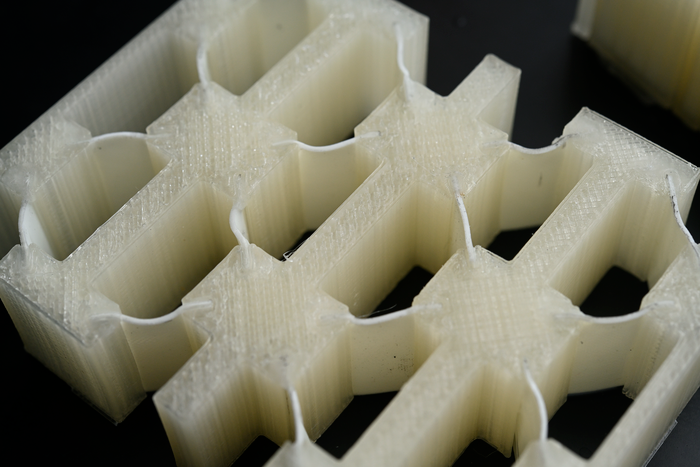Shock-absorbing foam-like material may lead to lighter, stronger, safer helmets
Findings may also lead to improved body armour, and automobile and aerospace parts, say scientists

Scientists have created a new shock-absorbing foam-like material that, they say, can help develop lighter, stronger and safer helmets.
The study, published in the journal Advanced Materials, may also lead to improved body armour, and automobile and aerospace parts, according to the researchers from Johns Hopkins University in the US.
“The material offers more protection from a wide range of impacts, but being lighter could reduce fuel consumption and the environmental impact of vehicles while being more comfortable for protective gear wearers,” study senior author Sung Hoon Kang, an assistant professor of mechanical engineering at JHU, said in a statement.
“We are excited about our findings on the extreme energy absorption capability of the new material,” Dr Kang added.
Scientists hoped to create a new material with even more energy-absorbing potential than current car bumpers and helmet padding after they found the materials typically used for these devices “do not perform well” at higher speeds and often aren’t reusable.
With high energy-absorbing liquid crystal elastomers (LCEs) – used in robotics – researchers found that they could add strength and also reduce weight to these structures.
When they tested the material’s ability to withstand impact in experiments, they found that it held up against strikes from objects weighing about 2kg to 7kg (4lbs to 15lbs), coming at speeds of up to 35kph, or about 22 miles per hour.
Although the tests were limited to 22mph due to limits of the testing machines, researchers say the padding can safely absorb even greater impacts.
In the research, scientists subjected a structure made of the material to a strain rate of 600/s. Strain rate is the change in strain – deformation – of a material with respect to time.
They found that the structure exhibits energy absorption density up to two orders of magnitude higher than the same fabricated from poly (dimethylsiloxane) elastomer, a polymer that yields its stretchy properties to popular toys like Silly Putty and Kinetic Sand, as well as adhesives and cosmetics.
Researchers say the new material’s energy absorption density is also comparable to the dissipation from irreversible plastic deformation seen in denser metals.
They believe the high energy-absorbing LCEs could provide more enhanced energy absorption if structures are systematically designed in the future from it for specific needs.
Helmets and impact-absorbing materials currently being used widely work by dissipating energy through inelastic mechanisms, researchers say, adding that these materials work by absorbing the energy to undergo deformation, fracture, and fragmentation.
In the process, they say these materials can become permanently damaged after one-time use, making them not suitable for repeated use.
On the contrary, scientists say the new material follows a structural energy trapping mechanism that is scalable and reversible, making them potentially reusable.
They are currently exploring ways to design, fabricate, and test next-generation helmets for athletes and the military.
“It is envisioned that the study can contribute to the development of lightweight extreme energy-absorbing metamaterials,” scientists wrote in the study.
Join our commenting forum
Join thought-provoking conversations, follow other Independent readers and see their replies
Comments
Bookmark popover
Removed from bookmarks